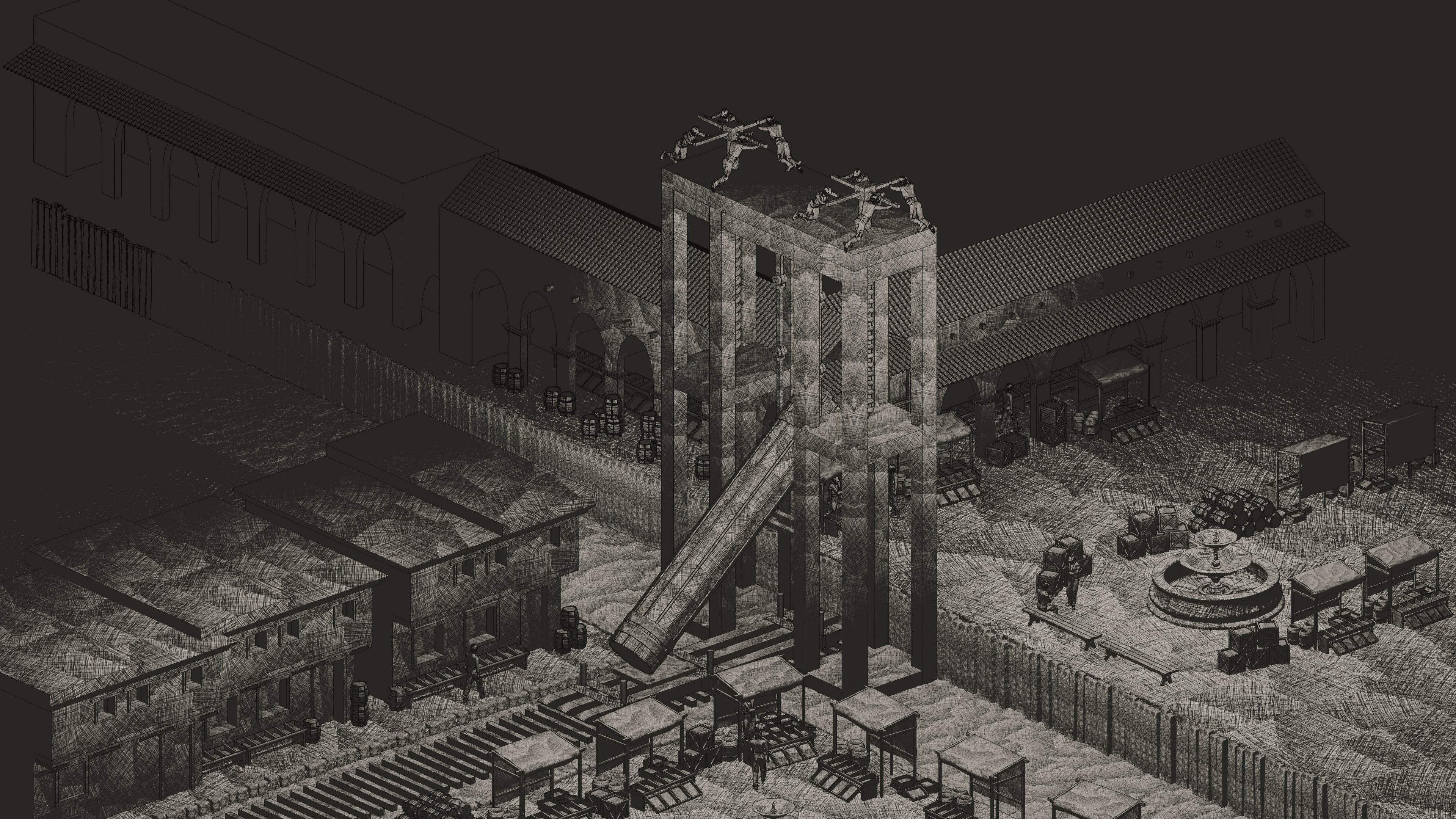Elevations:
the swing principle
The passage discusses the challenges of moving Roman columns through the city, particularly when encountering elevations. Careful planning is essential to ensure the columns reach their destinations without obstruction. Even in the most efficient transportation routes in Rome, such as the journey to the Forum of Trajan, columns had to overcome a 2-meter elevation. Pliny's Natural History suggested the use of ramps as a solution, but they came with disadvantages. Ramps needed a gradual incline, making them lengthy and difficult to install in the intricate layout of Roman streets. Moreover, if made from loose materials like sand or gravel, they had to contend with settling and required complex adjustments.

Francesco's machines, as illustrated in his Opusculum de architectura, provided a novel response to these challenges. Machines on folio 14V and 30V, featuring a circular connection that wraps around the column, offered greater mobility, enabling columns to navigate elevations within the city streets effectively akin to a swing. However, these machines had limitations in fully erecting the column from a flat position, which could be addressed by incorporating metal bars and support beams.
Lowering the column also required careful control, involving winches and ropes. Debris piles strategically placed beneath the column facilitated the lowering process. This system offered high flexibility in transporting columns of varying sizes over elevations without the need for dedicated machines for each specific size. In summary, Francesco's machines provided an innovative and practical solution to the challenges of transporting Roman columns through the city, especially when faced with elevations.